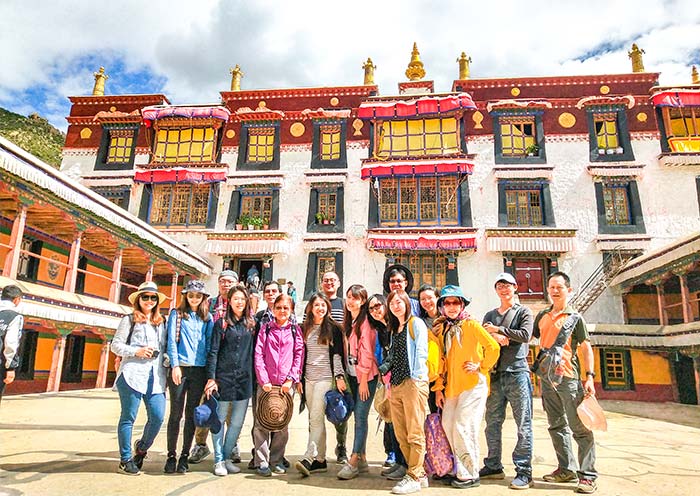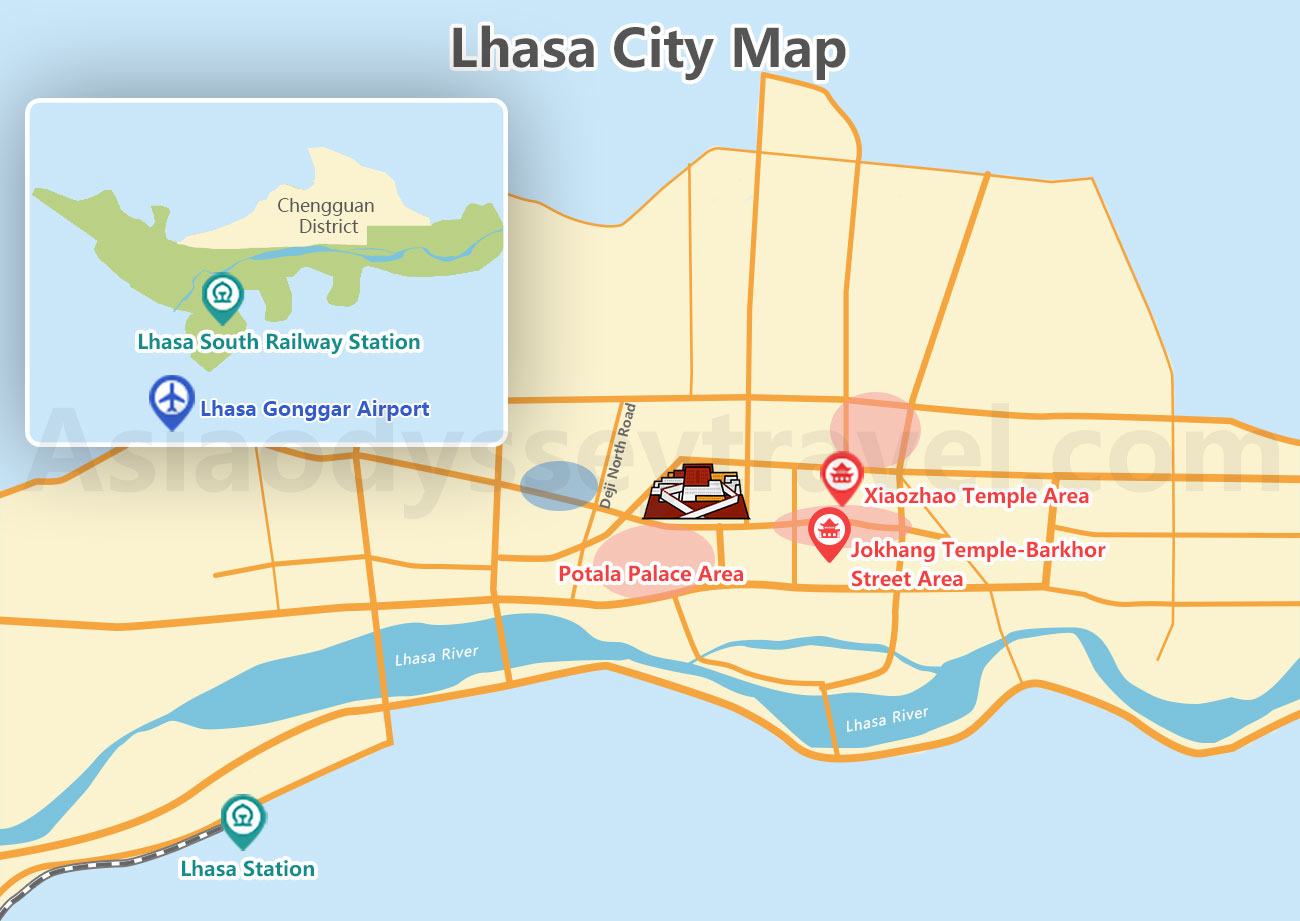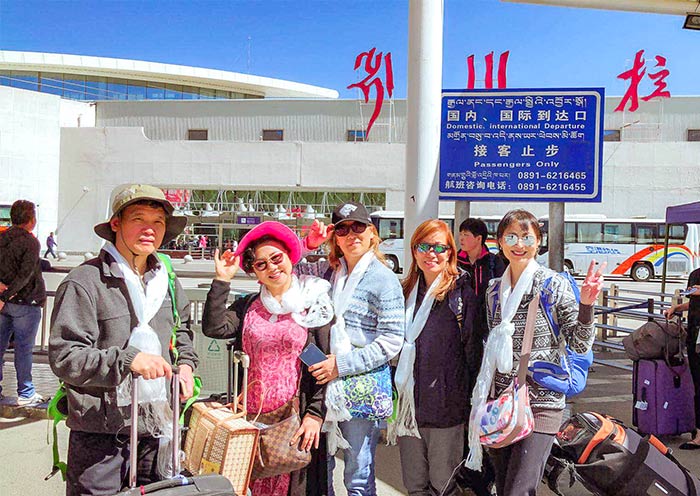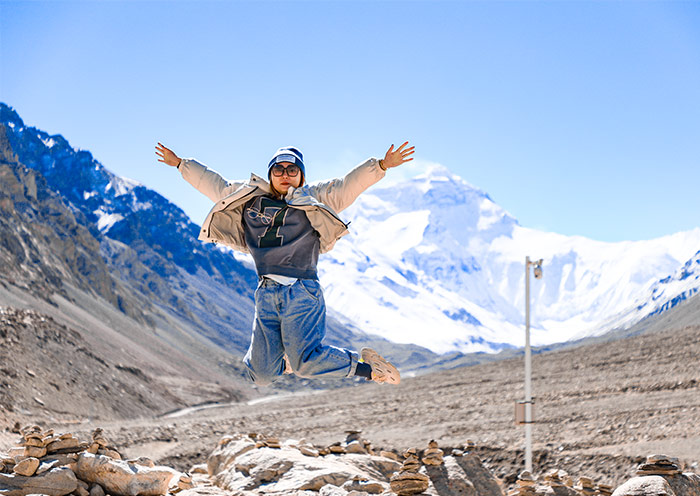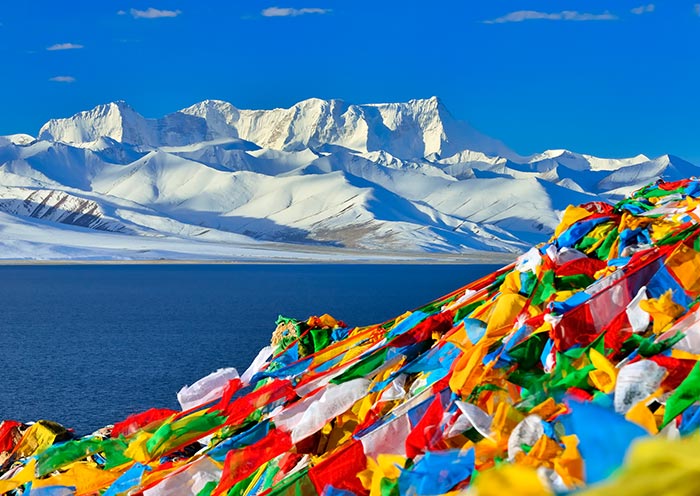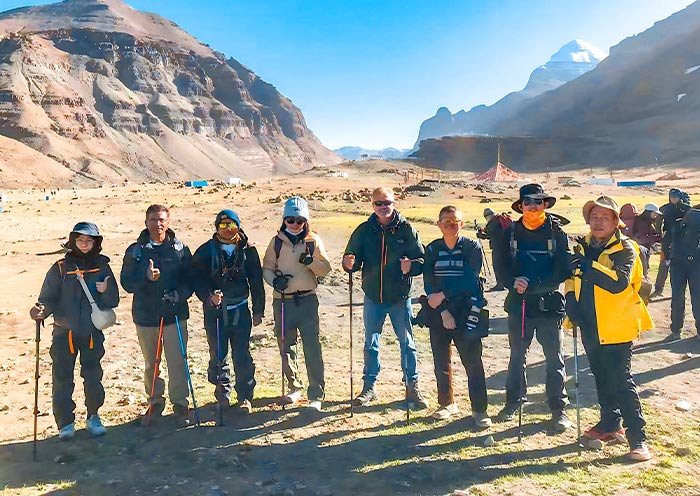Drepung Monastery vs. Sera Monastery vs. Ganden Monastery
| Feature | Drepung | Sera | Ganden |
|---|---|---|---|
| Famous For | Largest historic size | Monk debates | Stunning mountain views |
| Crowd Level | High (Shoton Festival) | High | Low |
Why choose Drepung? It's simple. The buildings are massive, the history is rich, and during Shoton Festival, it's absolutely spectacular! Yes, it gets crowded, but that's because it's worth it.
Here's a pro tip: visit Drepung in the morning, then head to Sera Monastery in the afternoon to watch the debates. This way, you'll experience two of Tibet's most important monasteries in one day.
Drepung Monastery History
Drepung Monastery, also known as "Zhebeng Monastery", was built in 1416 during the Ming Dynasty in the fourteenth year of the Yongle reign by Jamyang Qoigy, a disciple of Tsongkhapa, the founder of the Gelug sect.
The construction was sponsored by the nobleman Langka Sangbu. Originally named "Bai Deng Zhebang Monastery", it was later shortened to "Zhebang Monastery". In Tibetan, "Bai Deng" means auspicious and solemn, while "Zhebang" means a heap of rice.
After its completion, Drepung Monastery quickly developed into the most powerful monastery of the Gelug sect. In 1464, a monastic college was established at Drepung Monastery to teach Buddhist scriptures.

Top Places to Visit in Drepung Monastery
Drepung Monastery is a amazing place sits perfectly on a mountain slope. You'll see mountains behind it and the beautiful Lhasa River in front. The buildings climb up the hill like giant steps - it's a breathtaking sight.
Drepung Monastery has 3 main parts that you must see. First is Coqen Hall - it's the big central building. Then there are four special schools called Zhacangs: Loroi Ling, Deyang, Aba, and Guomang. Finally, there's the beautiful Gan Den Po Zhang palace.
Coqen Hall - the Main Building of the Complex
The heart of Drepung is the grand Coqen Hall. This main building has 221 rooms and a huge front square. Inside, you'll find golden Buddha statues, bright decorations, and colorful prayer flags. It's truly magnificent.
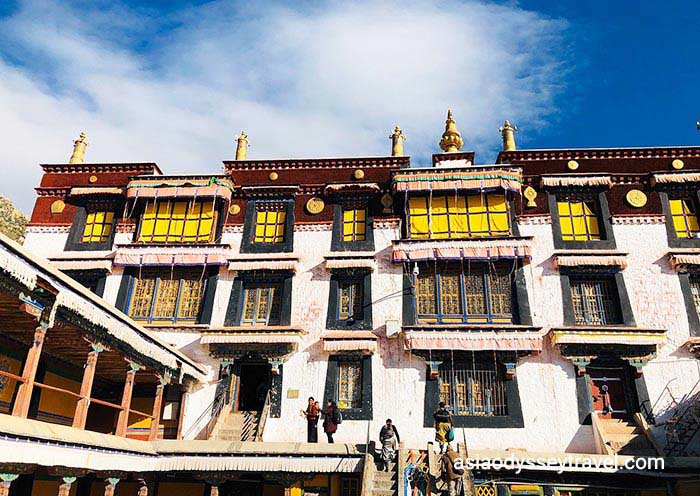
Four Great Colleges - the Tibetan Buddhist Colleges
- Drepung Loseling Dratsang, the largest of Drepung’s colleges
- Drepung Gomang Dratsang, the second to Loseling College
- Drepung Deyang Dratsang, the smallest college
- Drepung Ngagpa Dratsang, the Tantra Institute of Drepung Monastery
- Gaden Phodrangthe Former Residence of the Dalai Lamas
Next, you'll want to explore the Four Great Colleges. Loseling is the biggest, followed by Gomang. Deyang is smaller but full of charm, while Ngagpa teaches special Buddhist practices. Each college has a big hall where monks gather, beautiful temples, and places where monks live and study.
Ganden Phodrang
The most special building might be Ganden Phodrang. This palace looks like a castle and was home to Dalai Lamas. Walk up 27 stone steps to find beautiful courtyards. The second floor is where Dalai Lamas worked, and they lived on the third floor. The building tells amazing stories of Tibet's history.
Here's a good plan:
Start your visit at Coqen Hall in the morning when it's quiet. Then walk through the colleges to see monk life. End your journey at Ganden Phodrang. This way, you'll understand both daily monastery life and its deep history. Every building here shows you something special about Tibetan Buddhism and culture.
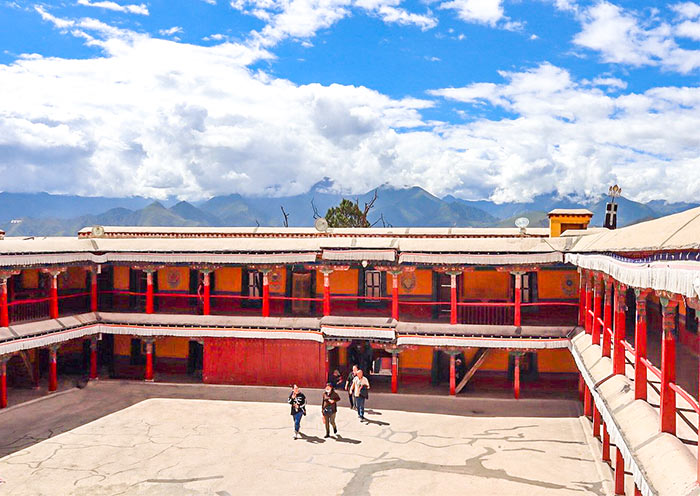
What to Do & Experience at Drepung Monastery
Drepung Shoton Festival - Witness the grandest Buddha unfolding ceremony in Lhasa
The Drepung Shoton Festival is one of the most significant and lively traditional festivals in Tibet. Also known as the Yogurt Festival or Buddha Displaying Festival, it is a national intangible cultural heritage of China.
The festival takes place every August (30th day of the 6th month in the Tibetan calendar) and lasts for one week. It features literature and art performances, sports competitions, business communication, travel, and leisure activities.
The Shoton Festival is a grand pageant of Tibet, with Drepung Monastery being the cradle of the celebration.
Drepung Monastery has been the first place for Tibetans to celebrate the Shoton Festival since the 17th century. Every year, this grand occasion attracts a large number of monks, Buddhist followers, pilgrims, and visitors. The festival is a spectacular sight, with the display of huge Thangka, colorful decorations, and joyful celebrations.
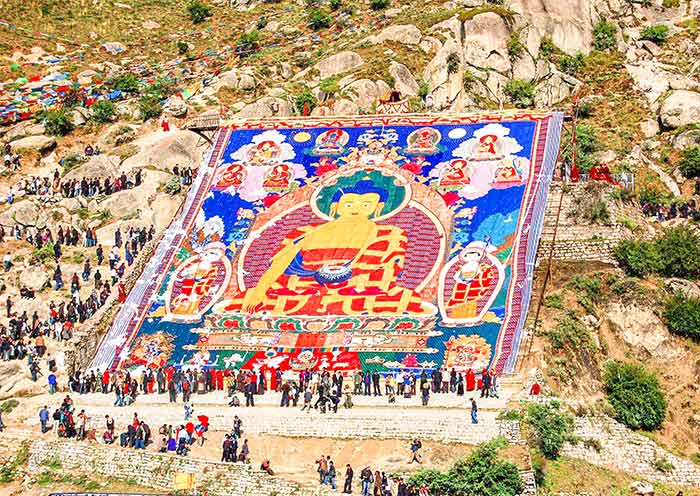
Drepung Buddhist Debate - Watch Monks debating in Tibetan Buddhism
Drepung Monastery, like Sera Monastery, boasts a grand debating courtyard where monks engage in rigorous Buddhist semantic and philosophical debates. Although Drepung's debates may not be as renowned as those of Sera, they are still a significant part of the monastery's tradition.
The debating courtyard is conveniently located near the Zhacangs and features a series of elevated debating platforms where monks can sit during debates.
While all monks are theoretically allowed to participate, only those who possess adequate knowledge of Buddhist teachings can ascend the platforms and achieve victory in the debates held throughout the Zhacangs and the monastery. Such monks will ultimately receive the esteemed "Geshe" degree.
Drepung Monastery schedules periodic debates, which commence at 2:30 pm in the afternoon. While not as well-known as Sera's debates, visitors fortunate enough to witness Drepung's debates can do so at the debating courtyard located within the monastery.
Best Time to Visit Drepung Monastery
April to October is generally considered the best time to visit Drepung Monastery, as the weather is mild and visitors can fully appreciate the monastery and its surroundings without being affected by extreme cold or heavy snow.
Additionally, August is a great time to visit Drepung Monastery if you want to attend the famous Shoton Festival, which is held during this month. During this time, visitors can witness the traditional Tibetan cultural performances and enjoy the festive atmosphere.
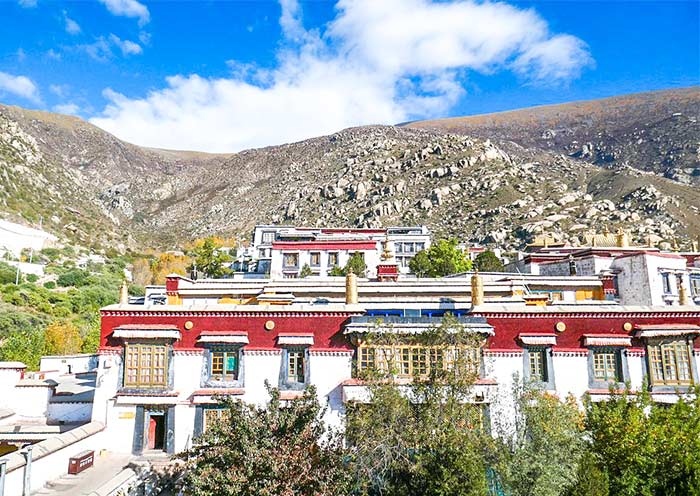
Location & How to Get to Drepung Monastery
Drepung Monastery is located west of Lhasa, about 9km from the city center, making it easily accessible by bus or taxi.
Distance to Potala Palace: about 7 km, about 20 minutes by driving
Distance to Jokhang Temple: about 9 km, 25-30 minutes by walking
Distance to Sera Monastery: about 11 km, about 20-30 minutes by driving
Transfer to Drepung Monastery
Foreign travelers are not allowed to travel alone in Tibet and must be accompanied by a licensed tour guide or travel agency. Asia Odyssey Travel offers private car services with a licensed tour guide to transfer visitors to Drepung Monastery and other scenic spots around Lhasa. If you need any service, feel free to contact us.
Contact Us for More Transfer InfoDrepung Monastery Amazing Surrounding Attractions
Sera Monastery
Sera Monastery is one of the must-visit spots in any Lhasa or Tibet tour. Located in the northern suburb of Lhasa, it is one of the three great Gelug university monasteries in Tibet, along with Drepung Monastery and Ganden Monastery.
Its rich history, magnificent architecture, and famous debates among the monks make it a truly unique and fascinating place to explore. The monks at Sera Monastery are particularly renowned for their debates, which are held in the courtyard every afternoon except on Sundays.
Learn more about Sera Monastery >>

Jokhang Temple
Jokhang Temple, located near Barkhor Street, is an awe-inspiring spiritual center in Tibet, with a rich cultural history dating back to the 7th century Tang Dynasty.
The 1300-year-old temple is home to a life-size statue of Buddha Jowa Sakyamuni, and its timeless allure continues to draw pilgrims from all over the world who prostrate themselves in deep reverence. Its stunning architecture, which blends the styles of Tibetan, Tang, Nepalese, and Indian cultures, is a testament to its magnificence and cultural significance.
Learn more about Jokhang Temple >>

Useful Tips to Travel in Drepung Monastery
1. Visit in a clockwise: According to the rituals of Tibetan Buddhism, walking around the temple, turning the prayer wheels, and circling the temples should all be done in a clockwise direction.
2. Respect the local beliefs and customs: It is important to respect the local beliefs and customs, and avoid pointing at the Buddha statues with fingers. Upon entering the main hall, visitors should remove their hats and maintain a quiet demeanor.
Photography should be done with caution and consent from the subjects, particularly when taking pictures of those who are performing the ritual of circling the temple.
3. No strenuous activities: Drepung Monastery is located at an altitude of approximately 3800 meters, so visitors should avoid strenuous activities to prevent altitude sickness.
4. You’d better visit in the morning: Many of the main halls in Drepung Monastery are closed in the afternoons, so it is recommended to visit in the morning or at noon. Afternoons are a good time to watch the Buddhist philosophical debates.
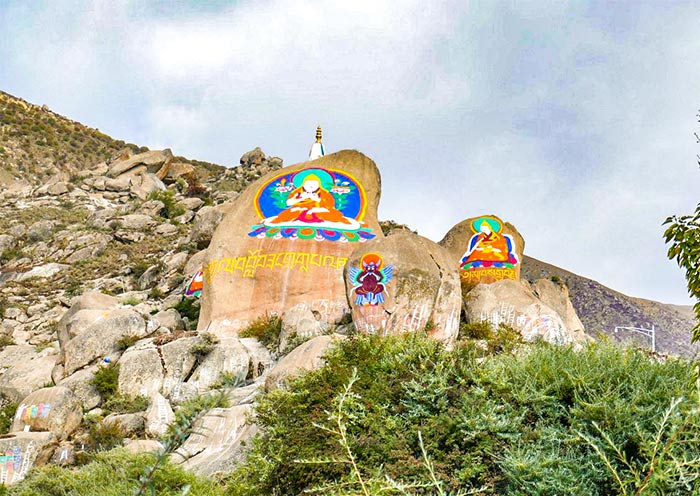
How to Plan Lhasa Tours with Drepung Monastery?
In Tibet, foreign travelers are required to explore with a travel agency. A 4-day Lhasa tour or an 8-day Lhasa Shigatse Mount Everest tour that includes a visit to the Drepung Monastery is a good way to experience the key attractions in the region.
Usually, it is common for travelers to visit both Drepung Monastery and Sera Monastery in one day, as these two monasteries are among the most famous Gelug monasteries in Tibet. By visiting both monasteries in a day, travelers can fully immerse themselves in Tibetan culture and witness the unique traditions and rituals of these two important religious sites.
Explore Tibet with Asia Odyssey Travel
Local based in Lhasa and Tibet over 10 years, our local team at Asia Odyssey Travel has carefully designed Tibet tours that offer a truly authentic and unforgettable experience.
You can choose to travel in the comfort of a private tour with a flexible itinerary, or join a group tour that's budget-friendly without compromising on quality. Whatever your preference, Asia Odyssey Travel has a tour that caters to your needs and desires, ensuring that your journey to Tibet is an unforgettable adventure.
